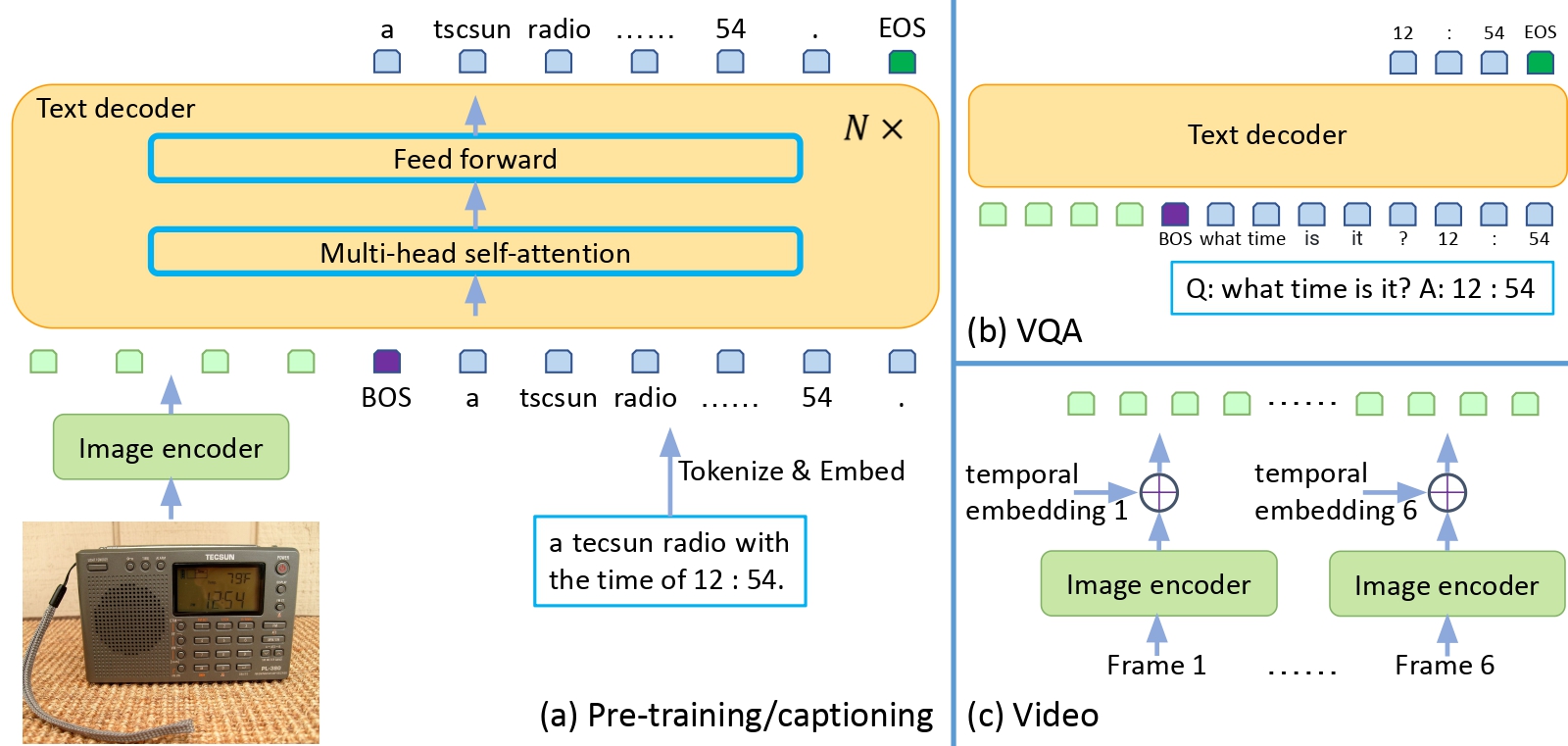|
--- |
|
language: en |
|
license: mit |
|
tags: |
|
- vision |
|
- image-captioning |
|
model_name: microsoft/git-large-coco |
|
pipeline_tag: image-to-text |
|
--- |
|
|
|
# GIT (GenerativeImage2Text), large-sized, fine-tuned on COCO |
|
|
|
GIT (short for GenerativeImage2Text) model, large-sized version, fine-tuned on COCO. It was introduced in the paper [GIT: A Generative Image-to-text Transformer for Vision and Language](https://arxiv.org/abs/2205.14100) by Wang et al. and first released in [this repository](https://github.com/microsoft/GenerativeImage2Text). |
|
|
|
Disclaimer: The team releasing GIT did not write a model card for this model so this model card has been written by the Hugging Face team. |
|
|
|
## Model description |
|
|
|
GIT is a Transformer decoder conditioned on both CLIP image tokens and text tokens. The model is trained using "teacher forcing" on a lot of (image, text) pairs. |
|
|
|
The goal for the model is simply to predict the next text token, giving the image tokens and previous text tokens. |
|
|
|
The model has full access to (i.e. a bidirectional attention mask is used for) the image patch tokens, but only has access to the previous text tokens (i.e. a causal attention mask is used for the text tokens) when predicting the next text token. |
|
|
|
 |
|
|
|
This allows the model to be used for tasks like: |
|
|
|
- image and video captioning |
|
- visual question answering (VQA) on images and videos |
|
- even image classification (by simply conditioning the model on the image and asking it to generate a class for it in text). |
|
|
|
## Intended uses & limitations |
|
|
|
You can use the raw model for image captioning. See the [model hub](https://huggingface.co/models?search=microsoft/git) to look for |
|
fine-tuned versions on a task that interests you. |
|
|
|
### How to use |
|
|
|
For code examples, we refer to the [documentation](https://huggingface.co/docs/transformers/main/model_doc/git#transformers.GitForCausalLM.forward.example). |
|
|
|
## Training data |
|
|
|
From the paper: |
|
|
|
> We collect 0.8B image-text pairs for pre-training, which include COCO (Lin et al., 2014), Conceptual Captions |
|
(CC3M) (Sharma et al., 2018), SBU (Ordonez et al., 2011), Visual Genome (VG) (Krishna et al., 2016), |
|
Conceptual Captions (CC12M) (Changpinyo et al., 2021), ALT200M (Hu et al., 2021a), and an extra 0.6B |
|
data following a similar collection procedure in Hu et al. (2021a). |
|
|
|
=> however this is for the model referred to as "GIT" in the paper, which is not open-sourced. |
|
|
|
This checkpoint is "GIT-large", which is a smaller variant of GIT trained on 20 million image-text pairs. |
|
|
|
Next, the model was fine-tuned on COCO. |
|
|
|
See table 11 in the [paper](https://arxiv.org/abs/2205.14100) for more details. |
|
|
|
### Preprocessing |
|
|
|
We refer to the original repo regarding details for preprocessing during training. |
|
|
|
During validation, one resizes the shorter edge of each image, after which center cropping is performed to a fixed-size resolution. Next, frames are normalized across the RGB channels with the ImageNet mean and standard deviation. |
|
|
|
## Evaluation results |
|
|
|
For evaluation results, we refer readers to the [paper](https://arxiv.org/abs/2205.14100). |